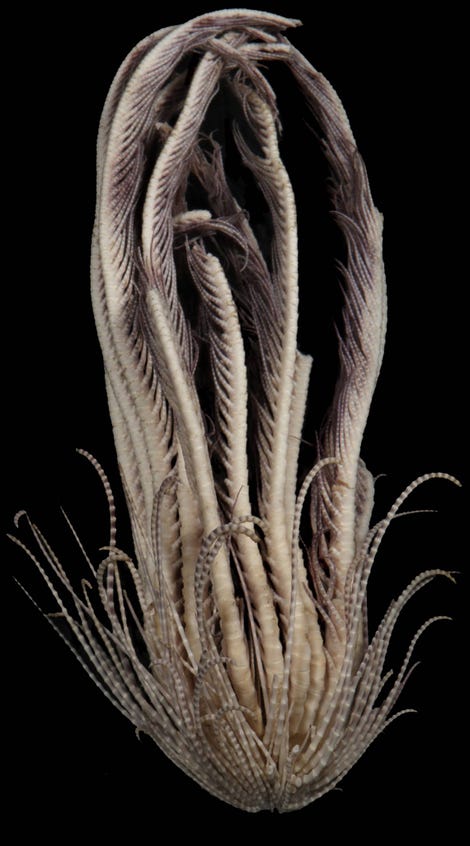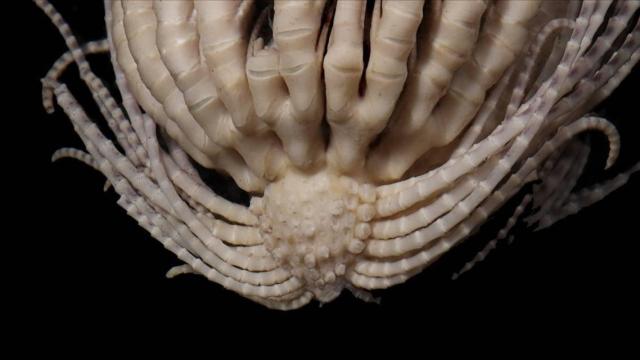Another day, another terrifying sea creature for our fragile human minds to process. A team of marine scientists say they’ve confirmed the existence of a bevy of new species living around Antarctica. One of these apparent discoveries is an invertebrate that somewhat resembles a strawberry, albeit with 20 arms.
The scientists are all affiliated with the Scripps Institution of Oceanography, based at the University of California, San Diego. Their goal was to untangle the family tree of a particular genus of marine animals called Promachocrinus, or Antarctic feather stars. To do this, they analyzed relevant specimens first documented and collected during a series of expeditions to the Southern, or Antarctic, Ocean conducted between 2008 to 2017.

These animals are broadly related to starfish, sea cucumbers, and other echinoderms, but not too much is known about them. Until now, only one species had clearly been identified as belonging to this genus, called Promachocrinus kerguelensis. The specimens found in these earlier expeditions were long assumed but not confirmed to be examples of it. By analyzing the DNA and body shape of the creatures, the researchers say they were able to correctly categorise many more distinct members of the genus.
All told, they classified seven other species of Promachocrinus, including four species previously never named by scientists. Perhaps the most eye-catching newly discovered species is Promachocrinus fragarius, nicknamed the “Antarctic strawberry feather star.” The animal’s “strawberry-like” central body, as described by the scientists, has 20 arms that extend out from it, and its natural color can range from “purplish” to “dark reddish.” It’s believed to live somewhere between 215 feet to 3,840 feet underwater.
The team’s findings were published earlier this July in the journal Invertebrate Systematics.
Though the researchers may have solved one marine mystery, there’s plenty more unknown species left to discover out there. In the case of Promachocrinus, the authors note that their work wouldn’t be possible without viable DNA samples. And it will take much more extensive research to even begin to understand the life teeming in the waters of the Antarctic.
“The vast nature of the Antarctic and Southern Ocean ecosystem dictates large scale sampling to understand the full extent of the biodiversity,” they wrote.
